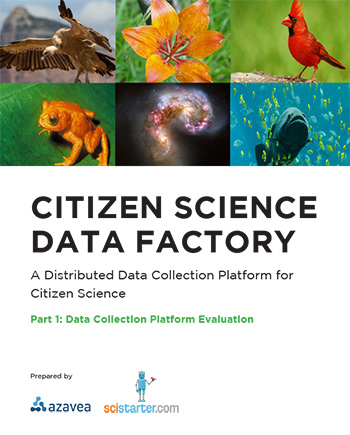What’s inside
Over the past few decades, several technologies have combined to create an environment in which scientists are able to engage the general public in the pursuit of knowledge and discovery. Smart phones, tablets, and ubiquitous networks have brought computing capacity into the outside world. Low cost sensors have made it possible to detect many types of natural phenomena. Open source software frameworks and cloud computing have reduced the cost of providing high performance computation. Finally, government and foundation funding have supported the growth of platforms that support participation and engagement in the scientific process by a broader segment of the public. And it’s more than just broader engagement; new kinds of inquiry are becoming possible. Exoplanet discovery is being accelerated by public participation in Zooniverse, and people are lending their home computers to the search for disease cures and extraterrestrial intelligence. This expansion of participation in science has become known as “citizen science”.
With funding from the Alfred P. Sloan Foundation, Azavea worked with partner, SciStarter, to investigate the latest developments in software, hardware and data processing capability as it applies to citizen science. This may seems like a departure from our focus on software for geographic data analysis, but, from our perspective, it fits right in. It is aligned with the crowd-sourced data collection made possible by OpenTreeMap, and the open source GeoTrellis framework is specifically designed for the growing size of geospatial data sets generated by new sensors and satellites. Open data, open source, open science – they all fit together.
The results of this research are assembled in this four-part report. The first part, Data Collection Platform Evaluation, examines existing online software platforms designed to support citizen science. The second, Technology Evaluation, describes recent technology related to sensors, data collection and data visualization. The last two parts include a set of user interface designs for a future citizen science data collection platform and the results of testing cloud computing platforms for geospatial data processing performance.
Post-publication Updates
The CitSci.org application has sent several updates to Part 1 of the report:
- CitSci.org now fully supports photo support
- CitSci.org now has full mobile apps for both iOS and Android
- CitSci.org now also a Form Creator tool

